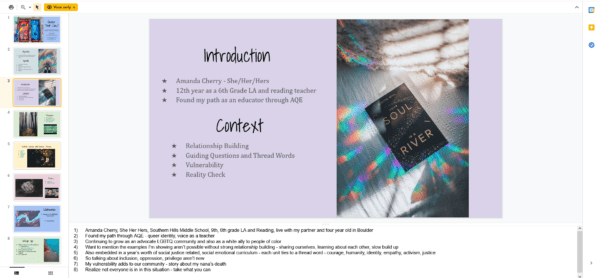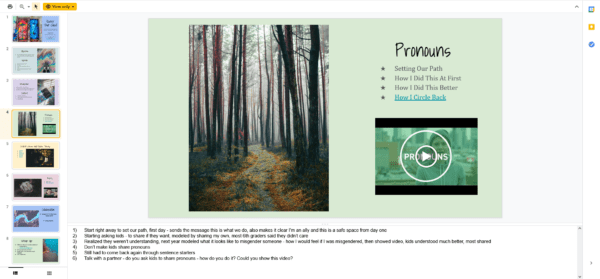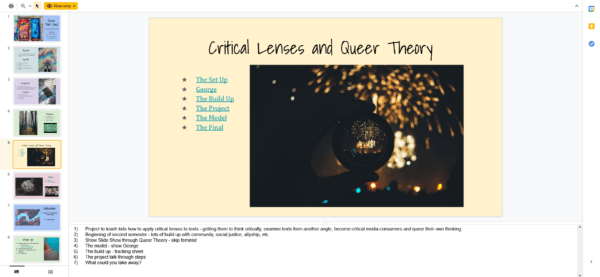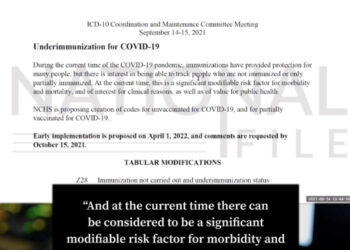Last Updated on July 31, 2021
Amanda Cherry, a middle school Language Arts instructor at Southern Hills Middle School in Boulder, Colorado, presented a lesson plan called “Queer That Class!” reportedly to a A Queer Endeavor conference, which describes itself “queer-led” organization that seeks to expand “gender, sexual and family diversity in education”.
In the session, Cherry says the presentation will teach instructors “about queering the content of your secondary Language Arts classes”. She explicitly seeks to inform fellow educators how to introduce middle school children to Queer Theory, including “pronouns, Critical Lenses and Queer Theory”. Cherry notes that she has been teaching 6th graders for 12 years, but has been teaching her students Queer Theory for six years, since she connected with the Queer Endeavor project.
Queer Theory, which is linked to Critical Theory – the basis for Critical Race Theory – teaches children to view books, poems, and other texts through the lens of a person who is LGBTQ, or to examine what impacts such texts may have on those who are LGBTQ. Cherry seems to suggest that her 6th grade students are first learning about Queer Theory in her classroom.

In her PowerPoint notes, Cherry states that her goal is to present herself as an “ally” to her students and create a “safe space” to discuss gender identity and Queer Theory “from day one.” In the video, Cherry explained, “Work starts really right away, on day one. And I start with pronouns right away, partially because it’s so important to be in a relationship with someone to know their pronouns, but also because it starts our path, it lets kiddos know that I’m an ally to LGBTQ+ students, it lets kiddos know that justice and equity are important to me, and it kind of sets the path for the work that we can do throughout the year.”
Cherry admits in her notes that when she began teaching Queer Theory to 12-year-olds, “most 6th graders said they didn’t care”, which led her to refine her tactics. The next year, Cherry says she “modeled what it looks like to misgender someone – how I would feel if I was misgendered” which “kids understood much better” and led them to share their pronouns. Still, Cherry warns not to force kids to share their pronouns if they prefer not to, seemingly suggesting this could be counterproductive.

“When I first started teaching pronouns years ago, I came in and I introduced my pronouns, and I said okay, if you would like to share your pronouns you can. And so many students said, I don’t really care what pronouns you use with me. I thought oh, I kind of messed this up,” Cherry admitted in the video. “The next year I came back and I again introduced myself with my name and my pronouns, then I also said, I told the story, last year everyone said they didn’t care what their pronouns are, but if someone used the wrong pronouns with me, I would correct them, so it does matter.”
While most Language Arts instructors ostensibly teach students how to deconstruct a sentence, Cherry adds a new twist: instead of simply identifying nouns, subjects, verbs, adjectives, and other rudimentary parts of a sentence, Cherry asks her students to “Identify the nouns, pronouns, and proper nouns” in a sentence. In the specific example given in the video, Cherry uses the plural “they” to identify a singular person who apparently does not want to use masculine or feminine pronouns.
In the video, Cherry explains that Queer Theory is a part of her entire class, but escalates “to the core front” at the end of the first semester, when she teachers children something called “Critical Lenses” which instructs the 6th graders to view life through the “lens” of Queer Theory. “This is when the idea of queering my class really gets lifted up to the core front,” Cherry explained.

Also in her notes, Cherry tells educators how to make students “think critically, examine texts from another angle, become critical media consumers,” and perhaps disturbingly, “queer their own thinking.” Apparently, Cherry uses the first semester with her students to introduce them to these terms and their significance, then “Beginning of second semester – lots of build up with community, social justice, allyship, etc.”
https://youtu.be/N0IUJoH4Lno





















